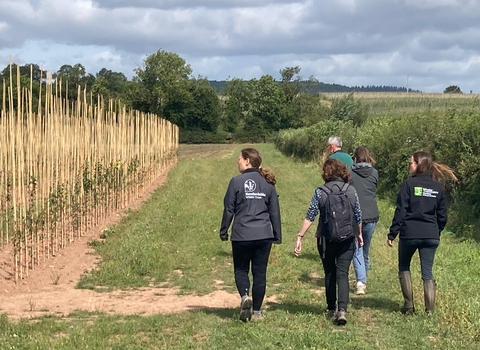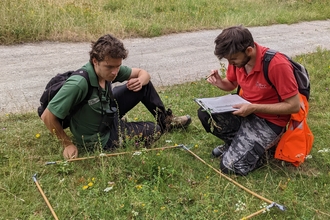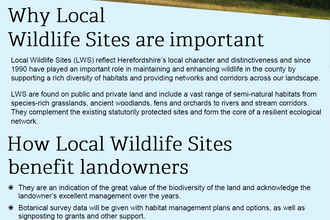Herefordshire's Local Wildlife Sites
What are Local Wildlife Sites?
Local Wildlife Sites (LWS) are areas of land that are especially important for their wildlife. They are some of our most valuable wildlife areas in the UK. LWSs in Herefordshire reflect the county’s local character and distinctiveness and, since first selected in 1990, have played an important role in maintaining and enhancing wildlife in the county by supporting a rich diversity of habitats and providing networks and corridors across our landscape.
LWSs are identified and selected locally by partnerships of local authorities, nature conservation charities, statutory agencies, ecologists and local nature experts, using scientifically-determined criteria and surveys. Their selection is based on the most important, distinctive and threatened species and habitats within a national, regional or local context.
LWS are found on public and private land and include a vast range of semi-natural habitats from species-rich grasslands, ancient woodlands, fens and orchards to rivers and stream corridors. They complement the existing statutorily protected sites and form the core of a resilient ecological network.
Read our short guide to Local Wildlife Sites to find out more
Local Wildlife Information for Landowners
There are a number of benefits from having Local Wildlife Site status attached to land. The following points indicate areas which can be of positive support to Landowners. You can also find out if there is a Local Wildlife Site on your land by looking on the map below:
- LWS status is an indication of the great value of the biodiversity of the land and acknowledges the landowner’s excellent management over many years. They cover a small % of the county and are a positive asset in the eyes of many and may offer an edge in the diversification of farming enterprises.
- Local Wildlife Sites are just that – LOCAL. They reflect what is important, valuable and distinctive in Herefordshire and they make a huge contribution to wider ecological networks throughout the county (note: there is overall guidance from Defra for LWS systems but site selection is local through a panel against local criteria)
- Receipt of botanical survey data and habitat management plans/options with sign-posting to grants and other support
- Survey information which can be used as a baseline for future agri-environment schemes e.g. ELMS and notably the Local Nature Recovery strand where payments by results may also be a feature
- Evidence of sward diversity (gained from a botanical survey) can be used to gauge likely carbon sequestration potential for possible future carbon credits as well as potential soil health status
- Provides an element of protection (a general presumption against development)
- A baseline botanical survey revealing good plant diversity can provide a route to the Priority Habitats Inventory (open access on Defra’s Magic Map) which in turn gives access to higher agri-environment scheme payments e.g. Countryside Stewardship GS6 option for species rich grassland.
The following positives are also worth noting:
- LWS selection is non-statutory so does not impose any legal obligations or restrictions, but they are identified in a local authority search e.g. when purchasing property or land.
- LWS status does not affect current agricultural activity – any management plans are advisory and will either complement existing good management or provide advice needed to enhance the biodiversity interest of the site
- LWS selection does not grant any rights of access
- Only a very small proportion of sites which are important for their biodiversity are designated as SSSI (i.e. statutorily designated and these comprise a representative sample only) which leaves a vast number of very important sites unrecognised and with no support – Local Wildlife Site selection can provide this support
- LWS selection does not lead to SSSI designation – the two processes are entirely separate. There has been a huge reduction in the rate of SSSI designation by Natural England for more than a decade now and this is no longer a core part of the organisation’s business.
- Across the country, without Local Wildlife Sites and their sympathetic owners there would be far fewer places for wildlife
Further information
As of October 2023, we are collaborating with Herefordshire Council in reviewing and updating the county’s designated Local Wildlife Sites. This new collaborative programme will fully update the classification of over 750 sites across the county.
If you have any queries about Local Wildlife Sites in Herefordshire, please contact Nature Recovery Officer Toby Fountain t.fountain@herefordshirewt.co.uk

Farm walk
Farming with Nature
We offer a range of consultancy services for landowners, farmers, businesses and smallholders.
From initial site visits and recommendations through to Sustainable Farming Incentive applications, our services can be tailored to your needs and scope of your vision.


